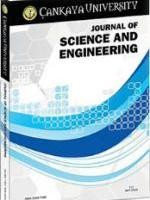Parmak Hareketlerinin Bilgisayarlı Yorumlanmasıyla Tek Oktavlı Notaların Seslendirilmesi
Parmak Hareketlerinin Bilgisayarlı Yorumlanmasıyla Tek Oktavlı Notaların Seslendirilmesi
___
- [1] F. Rossant, A global method for music symbol recognition in typeset music sheets, Pattern Recognition Letters 23 (2002), 1129–1141.
- [2] C. Nolker and H. Ritter, Visual recognition of continuous hand postures, IEEE Transactions on Neural Networks 13 (2002), 983–994.
- [3] D. O. Gorodnichy and A. Yogeswaran, Detection and tracking of pianist hands and fingers, Proceedings of the Third Canadian Conference on Computer & Robot Vision (CRV’06) Qu´ebec, Canada, June 7-9, 2006.
- [4] Y. Bulatov, S. Jambawalikar, P. Kumar and Saurabh Sethia, Hand recognition using geometric classifiers, Proceedings of the First International Conference on Biometric Authentication (ICBA 2004), Hong Kong, China, July 15-17, 753–759.
- [5] Y. Wu and T. S. Huang, Hand modeling, analysis, and recognition: For vision-based human computer interaction, IEEE Signal Processing Magazine 18 (2001), 51–60.
- [6] Ra L. N. Wong and P. Shi, Peg-free hand geometry recognition using hierarchical geometry and shape matching, Proceedings of the IAPR Workshop on Machine Vision Applications (2002) 281–284.
- [7] E. Y¨or¨uk, E. Konuko˘glu, B. Sankur, and J. Darbon, Shape-based hand recognition, IEEE Transactions on Image Processing 15 (2006), 1803–1815.
- [8] V. V. Nabiyev, Yapay Zeka: Problemler, Y¨ontemler, Algoritmalar, Se¸ckin Yayıncılık 2005.
- [9] V. V. Nabiyev , C. Kose, and S. Bayrak, An artificial neural network approach for sign language vowels recognition, The International Scientific Conference of Problems of Cybernetics and Informatics, Baku, Azerbaijan, 24-26 October 2006.
- [10] M’lou Dietzer, First Impressions: An Intermediate Piano Method, Alfred Music Publishing 2007.
- [11] W. K. Pratt, Digital Image Processing, John Wiley & Sons, New York 1991.
- [12] N. Otsu, A threshold selection method from gray-level histograms, IEEE Transactions on Systems, Man and Cybernetics 9 (1979), 62–66.
- Yayın Aralığı: Yılda 2 Sayı
- Başlangıç: 2009
- Yayıncı: Çankaya Üniversitesi
Yatırım Projelerinin Net Bugünkü Riske Maruz Değer Göstergesi Kullanılarak Karşılaştırılması
Dilan Karatepe, Fetih Yıldırım
Bayesgil VAR Modelinin Gerçek Zaman Dizileri için Kestirim Amaçlı Kullanılması
Türkiye Faunası için Üç Yeni Oribatid Akar Türü (Acari, Oribatida)
Ayşe Toluk, Sedat Per, Şule Baran, Hatice Aydın Yüksel, Pınar Coşkuner, Nusret Ayyıldız
Yutucu Yarım Düzlemin Kenarından Kırınan Üniform Alanların Fiziksel Optik Yöntemiyle Hesabı
Çok Kriterli Permütasyon Akış Tipi Çizelgeleme Problemi için Bir Tavlama Benzetimi Yaklaşımı
Cemalettin Öcal Fidanboy, Mehmet Reşit Tolun
Parmak Hareketlerinin Bilgisayarlı Yorumlanmasıyla Tek Oktavlı Notaların Seslendirilmesi
Complex Solutions for the Fisher Equation and the Benjamin-Bona-Mahony Equation
Some Applications to Lebesgue Points in Variable Exponent Lebesgue Spaces
